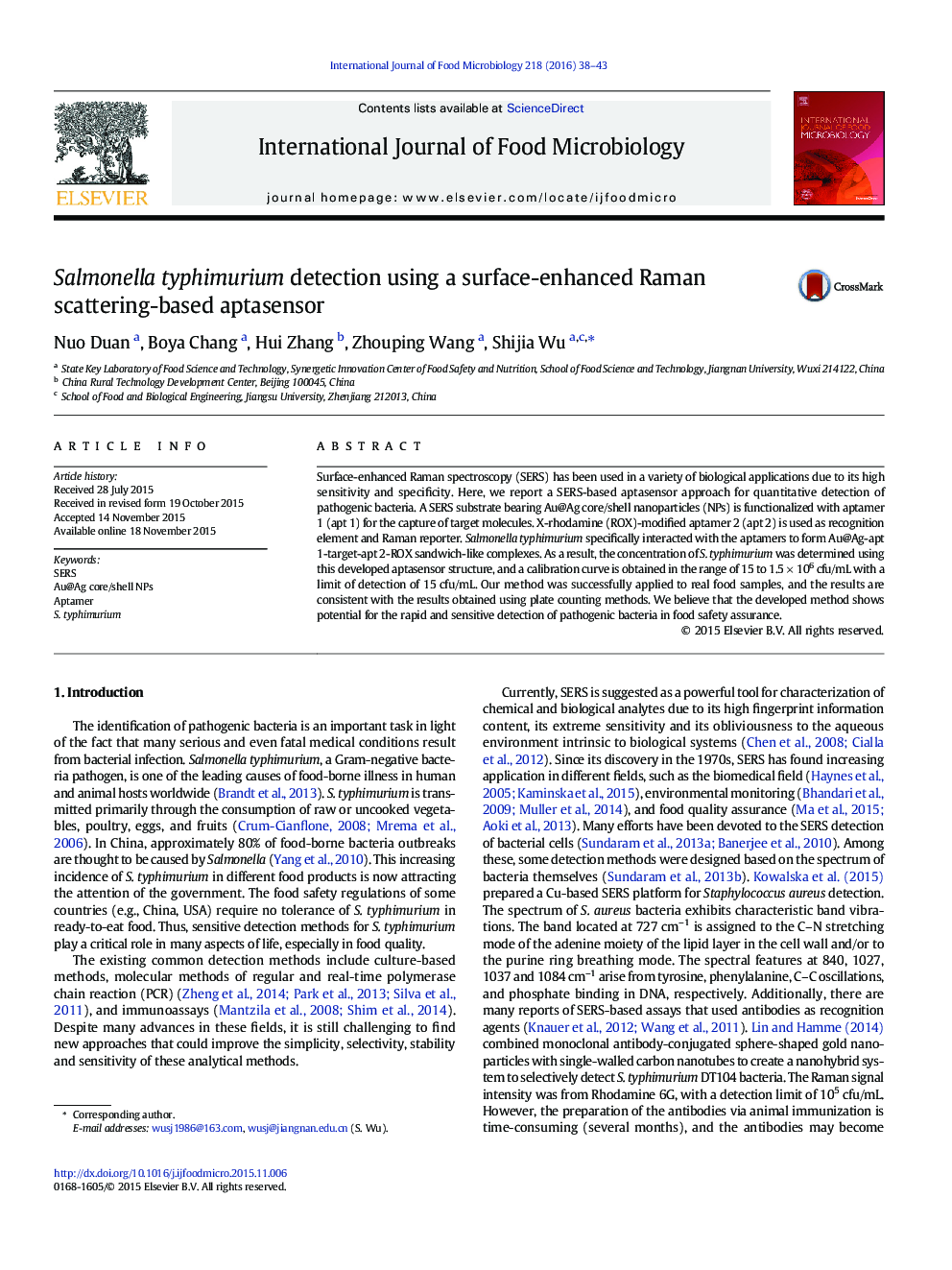| Article ID | Journal | Published Year | Pages | File Type |
|---|---|---|---|---|
| 4366375 | International Journal of Food Microbiology | 2016 | 6 Pages |
•A SERS-based aptasensor was developed for bacteria detection.•Au@Ag core–shell nanoparticles were used as SERS active substrate.•The method was sensitive and specific by using aptamers as recognition elements.•The technique shows potential for sensitive detection of pathogens in food safety.
Surface-enhanced Raman spectroscopy (SERS) has been used in a variety of biological applications due to its high sensitivity and specificity. Here, we report a SERS-based aptasensor approach for quantitative detection of pathogenic bacteria. A SERS substrate bearing Au@Ag core/shell nanoparticles (NPs) is functionalized with aptamer 1 (apt 1) for the capture of target molecules. X-rhodamine (ROX)-modified aptamer 2 (apt 2) is used as recognition element and Raman reporter. Salmonella typhimurium specifically interacted with the aptamers to form Au@Ag-apt 1-target-apt 2-ROX sandwich-like complexes. As a result, the concentration of S. typhimurium was determined using this developed aptasensor structure, and a calibration curve is obtained in the range of 15 to 1.5 × 106 cfu/mL with a limit of detection of 15 cfu/mL. Our method was successfully applied to real food samples, and the results are consistent with the results obtained using plate counting methods. We believe that the developed method shows potential for the rapid and sensitive detection of pathogenic bacteria in food safety assurance.
